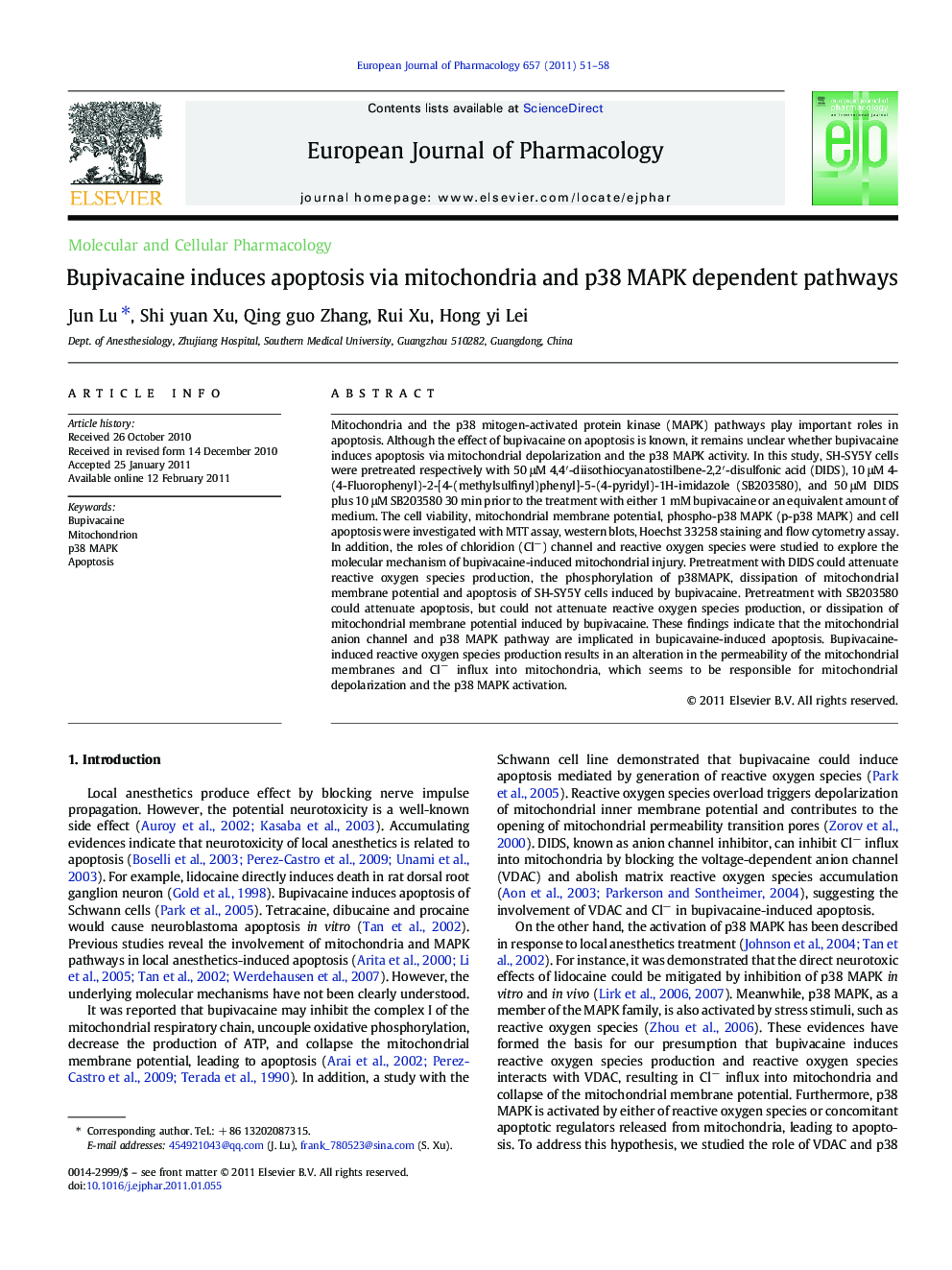| Article ID | Journal | Published Year | Pages | File Type |
|---|---|---|---|---|
| 2532881 | European Journal of Pharmacology | 2011 | 8 Pages |
Mitochondria and the p38 mitogen-activated protein kinase (MAPK) pathways play important roles in apoptosis. Although the effect of bupivacaine on apoptosis is known, it remains unclear whether bupivacaine induces apoptosis via mitochondrial depolarization and the p38 MAPK activity. In this study, SH-SY5Y cells were pretreated respectively with 50 μM 4,4′-diisothiocyanatostilbene-2,2′-disulfonic acid (DIDS), 10 μM 4-(4-Fluorophenyl)-2-[4-(methylsulfinyl)phenyl]-5-(4-pyridyl)-1H-imidazole (SB203580), and 50 μM DIDS plus 10 μM SB203580 30 min prior to the treatment with either 1 mM bupivacaine or an equivalent amount of medium. The cell viability, mitochondrial membrane potential, phospho-p38 MAPK (p-p38 MAPK) and cell apoptosis were investigated with MTT assay, western blots, Hoechst 33258 staining and flow cytometry assay. In addition, the roles of chloridion (Cl−) channel and reactive oxygen species were studied to explore the molecular mechanism of bupivacaine-induced mitochondrial injury. Pretreatment with DIDS could attenuate reactive oxygen species production, the phosphorylation of p38MAPK, dissipation of mitochondrial membrane potential and apoptosis of SH-SY5Y cells induced by bupivacaine. Pretreatment with SB203580 could attenuate apoptosis, but could not attenuate reactive oxygen species production, or dissipation of mitochondrial membrane potential induced by bupivacaine. These findings indicate that the mitochondrial anion channel and p38 MAPK pathway are implicated in bupicavaine-induced apoptosis. Bupivacaine-induced reactive oxygen species production results in an alteration in the permeability of the mitochondrial membranes and Cl− influx into mitochondria, which seems to be responsible for mitochondrial depolarization and the p38 MAPK activation.
